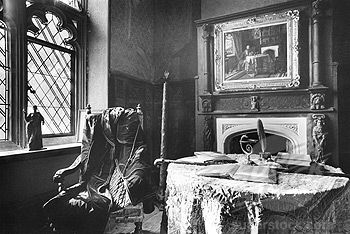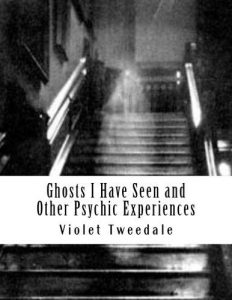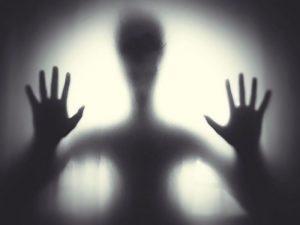Was Torquay’s most famous haunting and sensational exorcism inspired by a novel?

In 1859 Edward Bulwer-Lytton (pictured above) wrote his short novelette ‘The Haunted and the Haunters or The House and the Brain’. Based on the famous case of 50 Berkeley Square in London’s West End, ‘The Haunted and the Haunters’ became one of the most anthologized haunted house tales. This was the first modern haunted house story and it effectively created the genre. Before that authors set their ghost stories in remote locations and, following the Gothic, in some distant and undefined past. Edward set his in the present, in a big city, and identified the cause as psychic phenomena – a theme many later writers would utilise.

Edward lived in Torquay’s Warren Road (pictured above) and certainly knew his subject. He based his story on his twenty years’ study of paranormal phenomena, spiritualism and mesmerism. Significantly, this led some readers to believe that he was presenting much more than entertaining creative writing.
‘The Haunted and the Haunters’ is a first person account of a night spent in a haunted house in London’s Oxford Street. It’s a fact-finding mission to observe and find rational explanations for apparent supernatural phenomena. Our investigator hears footsteps, encounters furniture moving about, a cold room at the “heart” of the house and ghosts replaying their tragic deaths. The cause turns out to be a long-dead black magician who had trained his will to operate after his death.
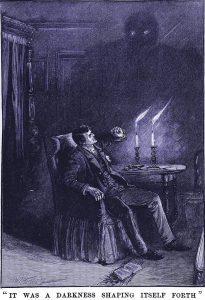
It’s a powerful and scary story, though definitely fiction. But did it influence the experiences of two real life investigators of the most haunted house in England? The house in question was Torquay’s Castel-a-Mare on Middle Warberry Road.
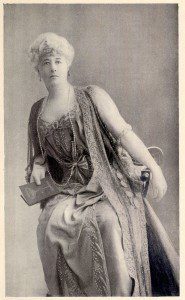
Our first intrepid ghost hunter to investigate Castel-a-Mare is the author, poet, and committed Spiritualist Violet Tweedale (1862-1936). Claiming to be psychic from a young age, Violet (pictured above) became involved in Spiritualism and Theosophy, and was a close associate of the occultist Helena Blavatsky. She was also a member of the magical Hermetic Order of the Golden Dawn, one of the largest single influences on twentieth century occultism. Conveniently, Violet lived just down the road from the haunted house.
It’s from Violet’s memoirs ‘Ghosts I Have Seen’ (1920) that we take a detailed description of her involvement with Castel-a-Mare. The crumbling Victorian villa had acquired a bit of a reputation having reputedly been haunted for 50 years. Ghosts were supposed to haunt not just the house but the stables where frightened horses had to be forced in backwards; none of the doors in the house would stay locked; dogs being taken for walks would howl as they passed, and their owners had to walk on the other side of the road; no tenants would stay very long; mediums failed to exorcise the spirits, and eventually the building fell into disrepair. Indeed, a number of explorations of the house had already taken place to look into a range of phenomena. These included piercing screams, continuous steps running along corridors and up and down stairs, and the constant locking of doors by unseen hands.
Violet’s initial investigations found that her “twig and straw arrangements”, left overnight to indicate human interlopers, remained undisturbed. However, “not a single door was shut, all were thrown defiantly wide”. Resolving to see who was opening these locked doors, her team of intrepid investigators stayed in the house. She recalled, “Suddenly a click made us both look up. The handle of the door was turning, and the door quietly opened wide enough to admit the passing of a human being. It was a bright sunny day, and one could see the brass knob turning round quite distinctly. We saw no form of any sort, and the door remained half open.”
This needed further investigation, and in 1917 Violet joined an eight strong team which included a medium, a builder and a soldier on leave who also seems to have been an amateur exorcist in his spare time. They began to explore the notorious house (pictured below).
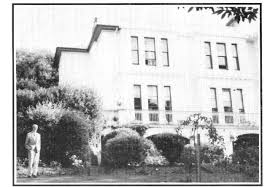
Soon the medium fell into a trance. She then, “Sprang to her feet with surprising agility, pouring out a volume of violent language. Her voice had taken on the deep growling tones of an infuriated man, who advanced menacingly… In a harsh, threatening voice he demanded to know what right we had to intrude on his privacy.
“The entity that controlled her possessed superhuman strength. His voice was like the bellow of a bull, as he told us to be gone, or he would throw us out himself, and his language was shocking… suddenly the control rushed full tilt at the soldier, who had stood his ground, and attacking him with a tigerish fury drew blood at once. The big builder and I rushed forward to his aid. The rest of the party forsook us and fled, pell-mell, out of the house and into the garden.

“This frail little creature threw us off like feathers, and drove us foot by foot before her… she was too much for us. Then suddenly, without warning, the entity seemed to evacuate the body he had controlled, and the medium went down with a crash and lay at our feet, just a little crumpled dishevelled heap. After about ten minutes, she gradually regained her consciousness, and seemingly none the worse for her experiences she sat up and asked what had happened.”
Another visit was then arranged, and the male entity again took control of the medium: “The same violence, the same attacks began once more. The soldier and the stalwart builder warded off the attacks, Then the soldier, who seemed to have considerable experience in such matters, tried a system of exorcising, sternly bidding the malignant entity depart. There ensued a very curious spiritual conflict between the exorcist and the entity, in which sometimes it seemed as if one, then the other, was about to triumph… We drove him back against the wall at the far end of the room. Finally the exorcist triumphed, and the medium collapsed on the floor, as the strength of the control left her.
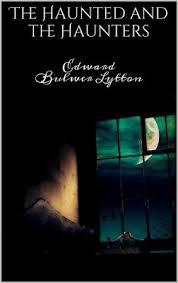
“She raised her head, and still crouching on the floor with closed eyes she began to cry bitterly. Wailing, and moaning, and uttering inarticulate words. ‘Another entity has got hold of her,’ announced the soldier. ‘Poor master! On the bed. Help him! Help him!’ she moaned, and pointed to one side of the room… By clenching her hands on her throat, the medium indicated death by strangulation…
“The medium had turned at bay, and began a frantic encounter with some entity unseen by us. Wildly she wrestled and fought, as if for her life, whilst she emitted piercing shrieks for ‘help’ and gasped out, ‘Terrible doctor–will kill me–he’s killed master–help! Help!’ Gradually she ceased to fight. The soldier was exorcising with all his force, and was gaining power; finally he triumphed, inasmuch as he banished the ‘terrible doctor’.”
The investigators later questioned the medium. She told them that a physician “of foreign origin” had strangled the master of the house and had then gone on to murder a maidservant. There’s a good range of Victorian and Edwardian stereotypes along with the parallels to Edward’s story.
Just to put things in a bit more of a context, Violet wasn’t a stranger to supernatural manifestations. She once described being terrified by, “a large headed, vicious elemental gnome” who turned up in her hotel room in Switzerland, and she had the very good fortune to spot a pixie sitting on a leaf in the garden of Lupton House near Brixham.
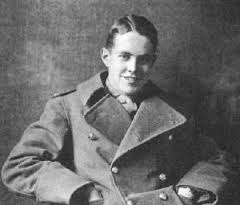
Our second narrative comes from the writer and committed Christian Beverley Nichols (1898-1983). In 1920 Beverley (pictured above), his brother and a friend, Lord Saint Audries, visited Castel-a-Mare. They were drawn to the house having heard of its haunted history. Searching with only a candle to light their way the three ghost-hunters went from room to room, eventually climbing a narrow staircase to the top floor. Beverley said that he then realised that his mind and body seemed to have slowed down and that even his thinking had become confused. He managed to crawl to a window before fainting.
Lord Saint Audries then decided to look around alone, but agreed he would whistle every minute to let the others know that he was safe. For 20 minutes, he searched the house and was heard to whistle. According to their testimony, suddenly Nichols and his brother felt something leave the house, silently passing them. They then heard a terrified shout from Audries and the noise of a violent struggle. A dishevelled Audries then ran into the garden and collapsed beside them.
When Audries recovered he said that his attention had been drawn to the room where Nichols had fainted. He saw a greyish light in the darkness coming from the room. When he turned to descend the stairs, something “black, silent and man-shaped rushed from the room and knocked him to the floor. An overwhelming sense of evil overcame him and he struggled to keep his sanity as he ran from the house.”
According to accounts, the three later discovered that a mad doctor had killed his wife and their maid in around 1870. This is all a bit unclear as another version of the story is that a guest or patient was visiting the same deranged doctor and was murdered. Of course, the small room where Nichols and Audries had their experiences was the site of the murders – where the evil physician occupied the “heart” of the house. No record of these murders seems to exist, however.
Castel-a-Mare was demolished/renovated in 1920. Not unexpectedly it then acquired another layer of myth. The local press reported that builders were asked if anything strange had happened while they worked there. They responded that though they had securely locked up overnight, their ladders and paint had been found to be knocked over when they opened up in the morning. One added that he didn’t like the feeling and atmosphere of the new bathroom at the top of the stairs…

The similarities between Edward’s story and the Castel-a-Mare haunting may, of course, just be a coincidence. We do know, however, that the leading figures of the nineteenth century occult revival admired Edward (pictured above) and that a number of societies claiming hidden knowledge saw him as one of their own. He has been suggested as a member of, amongst others, the Rosicrucians, Theosophists and the Hermetic Order of the Golden Dawn. Presumably supernatural enthusiasts – such as Violet and Beverley – would have read ‘The Haunted and the Haunters’, so did Edward’s novel act as a subconscious script for their terrifying experiences?
You can join us on our social media pages, follow us on Facebook or Twitter and keep up to date with whats going on in South Devon. Got a news story, blog or press release that you’d like to share? Contact us


